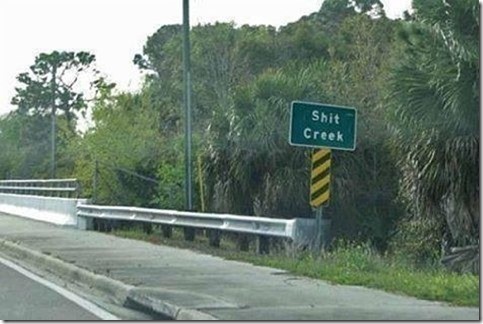|
|
||
|
||
|
Privacy Policy | Editorial Policy | Profit Policy | Join the Association | List of Members | Contact us | Index | Links |
||
|
Back Go to page: 1 2 3 4 5 6 7 8 9 10 11 12 13 14 15 16 17 18 19 20 Forward
|
||
|
Out in the Shed with Ted.
Ted McEvoy. |
||
|
|
||
|
This page is brought to you compliments of the Kedron Wavell Services Club, Brisbane’s superior Club.
|
||
|
Pensions.
The table below highlights the new fortnightly rates WEF 20 March 2016.
|
||
|
|
||
|
Veteran pension payments will increase in March in line with the biannual indexation process. Pension recipients including veterans, their partners, war widows and widowers across Australia will see the increase from 20 March 2016.
Due to pension rates being calculated on a daily basis, the first pension paid after the indexation on payday 31 March 2016 will comprise both the old and new rates. The new pension rates will be fully effective from payment date 14 April 2016.
Another paltry 0.8% - I think we’re being dudded people!!!
|
||
|
Defence Community Health.
Please check out the following web site www.racgp.org.au/afp/2016/march/i which is the internet version of the Australian Family Physician magazine issued to all members of the Australian College of General Practitioners. This is their March edition principally devoted to the Defence Community and their health care. All veteran family members should be encouraged to discuss the material with their GP so he/she is likewise familiar with it.
Dr Roderick Bain OAM co-authored the DVA portion of one article but collectively it brings all defence community related medical information together in the one place; a first in general practice and long overdue.
|
||
|
|
||
|
|
||
|
|
||
|
Special February.
A February like the one we had in 2016, won't come in our lifetime again because that February had 4 Sundays, 4 Mondays, 4 Tuesdays, 4 Wednesdays, 4 Thursdays, 4 Fridays and 4 Saturdays. This only happens once every 823years.
Why do we have leap years?
Leap Years are needed to keep our modern day Gregorian Calendar in alignment with the Earth's revolutions around the sun. It takes the Earth approximately 365.242199 days – or 365 days, 5 hours, 48 minutes, and 46 seconds – to circle once around the Sun. This is called a tropical year.
However, the Gregorian calendar has only 365 days in a year, so if we didn't add a day on February 29 nearly every 4 years, (ie: a year that is evenly divisible by 4) we would lose almost six hours off our calendar every year. And – if the start of the century is evenly divisible by 4 (ie 2000) we do not add a day in Feb. If we didn’t do this, after only 100 years, our calendar would be off by approximately 24 days!
|
||
|
A middle-aged frumpy couple return to a Mercedes dealership where the salesman has just sold the car they were interested in to a beautiful, leggy, busty blonde. "I thought you said you would hold that car till we raised the $155,000 asking price," said the man. "Yet I just heard you close the deal for $135,000 to the lovely young lady there. You insisted there could be no discount on this model." "Well, what can I tell you? She had the ready cash and, just look at her, how could I resist?" replied the grinning salesman.
Just then the young woman approached the middle-aged couple and gave them the keys. "There you go," she said. "I told you I would get the dope to reduce it. See you later, dad."
Never mess with us old uns!
|
||
|
Harrier Jet Emergency Landing on Cargo Ship.
The Alraigo Incident refers to the landing by a lost British Royal Navy Sea Harrier aircraft on the deck of a Spanish container ship in 1983. The aircraft was flown by Royal Navy Pilot Sub-Lt Ian Watson.
On 6 May 1983 Sub Lieutenant Ian "Soapy" Watson was a junior Royal
After completing the search Watson flew to an arranged meeting point with his flight leader. When the flight leader did not appear Watson turned towards Invincible expecting it to appear on the radar; when he was unable to find the carrier he made a radio transmission. It was at this stage he realized his radio was not working and the NAVHARS (inertial navigation system) had not taken him back to the expected location for landing.
As Sea Harrier ZA176 began to run low on fuel Watson turned the aircraft East towards a known shipping lane making radar contact with a surface vessel at 50mi (80km). At 12mi (19km) he made visual contact with the container ship Alraigo and initially planned to eject in sight of the vessel.
After performing an initial fly-by of the Alraigo Watson noticed that the ship was carrying a number of flat topped containers similar in size to a practice landing pad. The container was carrying a base plate for a telescope being delivered to the La Palma Observatory in the Canary Islands. On his second approach Watson landed the Sea Harrier on top of the shipping container with only a few minutes of flight time to spare. As he touched down the aircraft began to slide backwards on the wet surface. Watson attempted to retract the landing gear to arrest the slide but this failed and the aircraft slipped backwards off the container and onto the roof of a van parked on the deck. The van partially held up the fuselage and stopped a further slide.
Four days later a considerable international media presence witnessed the Alraigo sail into dock at Santa Cruz de Tenerife with the Sea Harrier still perched on its container. The aircraft was salvageable and the ship's crew and owners were awarded £570,000 compensation. When Watson returned to the Illustrious, a Board of Inquiry essentially did nothing. But when the Illustrious returned to port, Watson underwent a second Board of Inquiry.
In 2007, Britain’s National Archives released a number of Royal Navy files and the second inquiry report was finally made public. Noting that Watson had completed only 75 percent of his training before he had been sent to sea, the board blamed Watson’s inexperience and his commanders for assigning him an airplane “not fully prepared for the sortie,” a reference to radio problems. Nonetheless, Watson was reprimanded and given a desk job.
Watson eventually acquired 2,000 hours in Sea Harriers and another 900 in F/A-18s before resigning his commission in 1996. Today, he says that media attention embarrassed Royal Navy brass and caused the punishment, but refuses to point fingers. “It was me,” he says. “I was there and that’s where it should stop.”
Sea Harrier ZA176 was converted to the FA2 variant in 1992 and retired from service 20 September 2003. The aircraft is now on display at Newark Air Museum in Nottinghamshire England in its FA2 configuration.
Click the centre of the pic below to see the news video of the incident.
Definition.
An Airman - see HERE
Sub-mariners
Sailors on Australia's submarines will be given annual lump sum payments of up to $50,000 just for staying in their jobs as navy bosses grow increasingly desperate to keep crews on the boats.
The navy's high command hopes the big money offer will end their
long
Navy personnel have been told that submariners will have their salaries topped-up by between $15,000 and $50,000, according to experience, each year they continued serving with the sub fleet, either on land or sea. Under the "deliberately differentiated employment conditions" (DDP) those who take to the water will continue to receive their submarine maritime disability allowance and maritime sustainability allowances, along with the new lump sums in what is hoped to be a powerful financial incentive to stay with the subs or to sign up with the service.
But the lump sums will replace existing retention payments.
There will also be improved chances for promotion and for submariners to spend time serving in other arms of the navy. Sailors will be able to cash-out some the large leave balances they accumulated in recent years and the submariners's leave arrangements will be reformed in a move to offer greater work-life balance.
|
||
|
|
||
|
HMAS Dechaineux, which came close to disaster in 2003, leads HMAS Waller and HMAS Sheean away from Rockingham, Western Australia.
|
||
|
In his message to all his personnel, Chief of Navy Tim Barrett did not try to gloss over the problems his force had experienced trying to keep a well-trained force of submariners in their jobs. Crew shortages were a key reason behind the navy's struggles to keep a full force of Collins Class subs in the water, although the technical issues dogging the Collins boats have improved in the past three years.
The generous new approach is at odds with the pay deals offered to the majority of sailors, soldiers and Air Force personnel who had to resort to a recent political campaign to secure a 2 per cent pay increase. One Defence expert says only time will tell if the new lump sum payments, that replace a number of allowances and entitlements for submariners not available to surface crew, will solve the navy's retention problem.
In his message to the navy, Vice Admiral Tim Barrett said previous efforts to retain sufficient numbers of submarine crew had not worked. The Vice Admiral said a survey of submariners had indicated they wanted a better work-life balance, more opportunities for promotion and more money if they were to stay in their demanding jobs. The survey results convinced the navy's high command to try something different for the submarine arm but Vice Admiral Barrett made it clear in his message that the DDP was "the way of the future."
"It is deliberate and different to what we have tried previously," he wrote. "The aim of the DDP is to improve the retention, attraction and re-attraction of those who are able and willing to contribute to the submarine capability."
Defence expert Mark Thomson of the Australian Strategic Policy Institute agreed that there had been improvements, both on the technical and maintenance side of Australia's subs and on the recruitment and retention of their crews. "The navy has had a lot of trouble retaining sufficient people in the submarines, but the word has come down that there have been improvements and there are more crew than there used to be."
|
||
|
Wife says to husband, “please vacuum out the lounge”. Husband says to wife, “can’t, the vacuum is buggered”. Wife says, “are you sure”. Husband says “yes, it won’t start!” See HERE
|
||
|
Perhaps this could be the reason
why.
"UP periscope" is the famed catchcry of submarine commanders in Hollywood war films, but even that basic command now poses a challenge for Australia's real-life Collins-class submarines.
The periscopes on the Collins-class boats are riddled with electrical problems, are prone to breakdown and sometimes suck water into the submarine. Almost a third of their electrical components are obsolete and when they break, there are no spares, meaning they have to be sent to Germany to be fixed. A confidential Defence report, revealed in The Australian says the periscopes alone pose a "very high risk" to the submarines reaching the end of their planned service life, of between 2024 and 2031, much less a proposed service-life extension of a further seven years.
Yet dodgy periscopes are not the only problems facing Defence as it contemplates one of the most precarious and ambitious projects in the nation's history: a quest to keep the troubled Collins-class vessels at sea until Australia can build submarines to replace them.
The cost of failure is simple. If the Collins cannot be kept in the water until the 2030s, Australia will not have submarines to defend its coastline, for the first time since 1967, because there will be a gap between the retirement of the Collins and the commissioning of new submarines to be assembled in Adelaide.
|
||
|
|
||
|
A trailer sailer?? |
||
|
|
||
|
This is a strategic and political risk no government will want to take, lest it be accused of jeopardising national security. So either the government will have to find a way to keep the Collins-class submarines operating for an extra "cycle" of seven years beyond their current retirement dates, or it will have to take the embarrassing option of leasing, or even buying, smaller submarines from another country to plug the gap.
This challenge is the latest in the turbulent life of the Collins subs. Ever since they were built in the 1990s, Australia's first home-grown submarines have been bedevilled by technical problems and sustainment issues.
A raft of internal and external Defence reviews over the past decade has failed to solve the problems, which has meant that barely two of the six boats have been available for operations at any time.
The irony is that when the submarines do work properly, they are highly effective, but this has happened too rarely for the subs to be able to meet the great expectations held for them when they were conceived in the 1980s.
There is little doubt the Coalition will try to keep the fleet in the water for as long as possible, but it is keeping its options open. The government's election policy on defence was deliberately vague on this point, promising only to "ensure Australia's Collins-class submarine force has its rightful place as a regionally superior conventional submarine capability". The policy says any final decision on how the government will ensure Australia has no capability gap between its new and old submarines will be made in close consultation with Defence chiefs.
|
||
|
|
||
|
|
||
|
The most likely option is that the Coalition will try to extend the life of the submarines from 28 years to 35 years. This means the fleet's initial progressive retirement date of between 2024 and 2031 will be extended to between 2031 and 2038.
This is necessary because the future submarines will now not be ready until the 2030s - a grim legacy of a slow, indecisive and over-cautious start to the new submarine project by the Rudd/Gillard governments. Labor was so frozen by indecision in over what sort of submarine Australia could and should have that it slowed the project, known as SEA1000, to a crawl. Even if all possible resources were now suddenly thrown at the $36 billion plan to build up to 12 new submarines, it would still be close to two decades before any new Australian-constructed submarines could fire a torpedo in anger.
This has saddled Defence with the task of ensuring the Collins fleet reaches not only its original retirement date, but also an extra seven years on top of this - in other words, extend one of the world's most troubled and poorly managed submarine programs beyond its planned service life.
It is a heroic quest, but can it actually be done?
Recently Defence set up a project team involving representatives
from the navy, the Defence Materiel Organisation (DMO) and the
Defence Science and Technology Organisation to evaluate the
potential service life of the
Smith said "The study found there is no single technical issue that would fundamentally prevent the Collins-class submarines from achieving their indicative service life or a service-life extension," What the government did not reveal was that the study also found no fewer than 68 major systems aboard each of the six boats that posed a high to extreme risk of preventing the fleet from reaching its life expectancy or being extended for a further seven years beyond that.
It concluded that unless each of these 68 platform and mission
system problems was urgently tackled, backed by sufficient funding
and clear plans, then a life extension of the Collins submarines
would be "unachievable". The Australian understands that the study,
which has not been publicly released despite having only a lowly
"restricted"
DMO thinks the two most extreme risks to extending the subs' life are the troublesome diesel engines and the system controlling essential functions, known as the Integrated Ship Control Management and Monitoring System. It says the ongoing unreliability of the engines and the outdated computers underpinning the ISCMMS pose an "extreme risk" to plans to extend the life of the submarines. The government gave a $65 million first-stage approval to start the long process of modernising the ISCMMS to the standards needed to allow the submarines to reach their planned service life, as well as their planned extension. The engines are already subject to a remediation program but DMO still sees enormous risk in them, saying they are the single most problematic part of the Collins boats.
It is understood the serious problems identified by the DMO study range across all aspects of the submarines.
They include faulty hatches, obsolete weapons controllers, poorly made generators and unreliability in both the main propulsion system and the emergency propulsion system that is critical to submarine safety. It is also believed to warn of looming obsolete gas and fire detection systems. The DMO study is believed to be slightly less concerned about the potential for a catastrophic pressure hull failure due to corrosion or ageing. Although it is thought to assess possible pressure hull failure as "high risk" for any extension program, these risks are partly reduced by the submarines having not completed nearly as many dives as was expected due, ironically, to the amount of time they have spent being repaired.
In particular, the submarines have done very little deep diving, which would have placed enormous pressure on the hull.
|
||
|
|
||
|
|
||
|
All Collins submarines have been banned from operating at so-called "deep diving depth" since February 2003, when a flexible seawater hose broke in HMAS Dechaineux off the coast of Perth, causing 12,000 litres of water to flood.
As The Australian later revealed, that flood, which almost drowned Able Seaman Geordie Bunting, came within 20 seconds of sinking Dechaineux and dooming its crew of 55 men and women. Since then the navy has been examining ways for its submarines to safely return to deep diving depth, which will be crucial in any conflict.
(How much are they offering people to serve on these things?? Is there that much money in the universe?? - tb)
Among the more disturbing findings in the DMO study is that the submarines are getting noisier due to the age of the equipment, a development that makes them easier to detect both in battle and when conducting clandestine intelligence gathering. The submarines' sonar electronics are also fast reaching their use-by date; the study argues that this is one of the most urgent items on the fix-it list. Another challenge is that the Collins boats are getting heavier, by between half a tonne to one tonne a year, for reasons DMO cannot work out. It warns that unless equipment is removed from the submarines in the future to compensate for this increase, weapons loads will have to be reduced.
The submarines are also too hot, with cooling systems frequently
unable to bring the inside of the boat down to acceptable
temperatures, posing risks to equipment and making it less
comfortable for the crew. While the DMO concludes none of these
problems on their own will make it impossible to keep the submarines
in the water until the 2030s, the study makes it clear that
extending their lifespan is an untested gamble that will cost many
In the end, the Coalition is likely to conclude it has little choice but to roll the dice and try to extend the life of the subs, but this will be a high-risk exercise and a leap of faith, given Australia's poor record of maintaining and sustaining the fleet.
Over the next decade, Australia's defence industry will have to juggle the twin challenges of starting to build the submarines of tomorrow while also keeping afloat the submarines of today.
|
||
|
A tribute. Although US in origin, this is a wonderful tribute to those who have stood in harm's way so we can all enjoy the life of freedom we take for granted.
| ||
|
Always wondered about this place – know a lot of people who have been up there but never knew where it was.
|
||
|
|
||
|
|
||
|
|
||
|
Blessed are those who are cracked, for they are the ones who let in the light!
|
||
|
|
||
|
Ok, Ok!! – I’m going back to my room now!!
|
||
|
|
||
|
|
||
|
|
||
|
Back Go to page: 1 2 3 4 5 6 7 8 9 10 11 12 13 14 15 16 17 18 19 20 Forward |
||
|
|


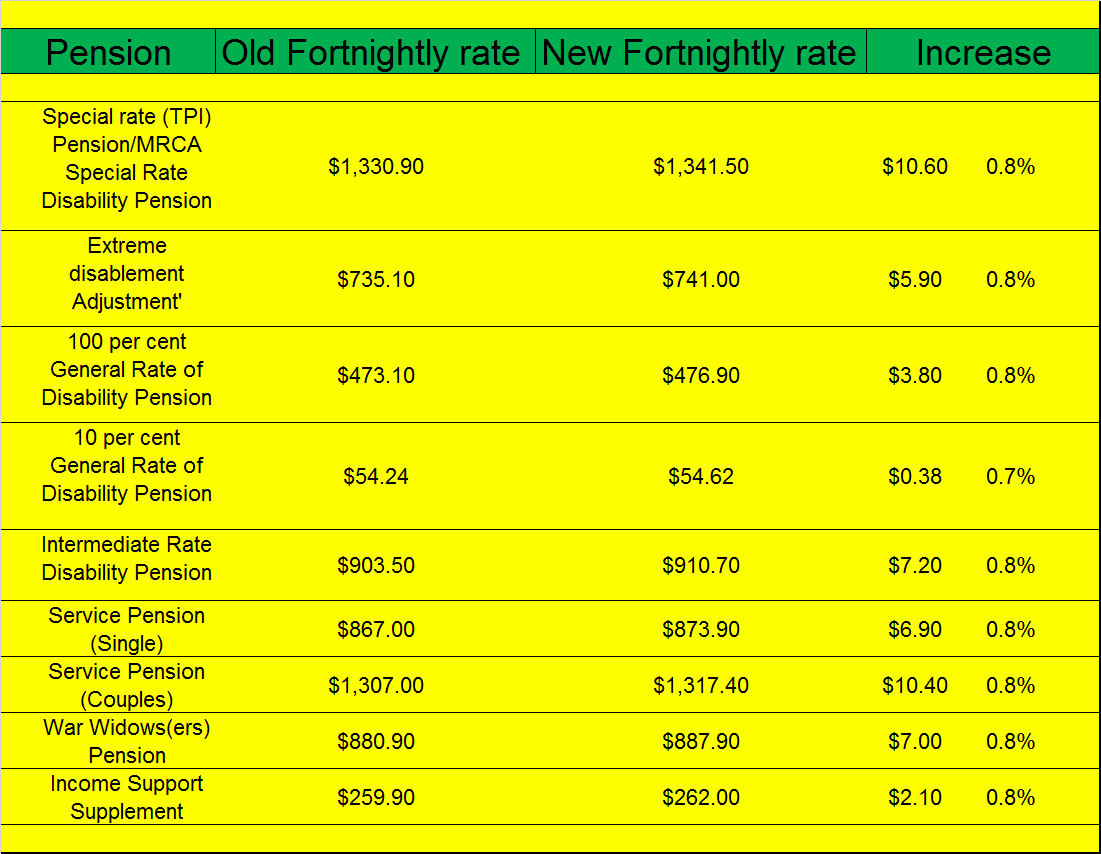

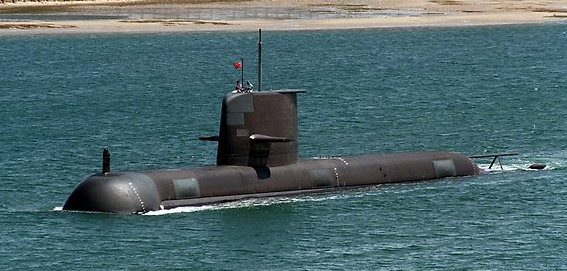 struggle to hold on to enough sailors to maintain Australia's
vital submarine warfare capability. The unprecedented offer of
different pay and working conditions to one arm of a Defence service
follows a frank admission by top naval brass that the ranks of
Australia's submarines crews are under-strength and fragile.
struggle to hold on to enough sailors to maintain Australia's
vital submarine warfare capability. The unprecedented offer of
different pay and working conditions to one arm of a Defence service
follows a frank admission by top naval brass that the ranks of
Australia's submarines crews are under-strength and fragile.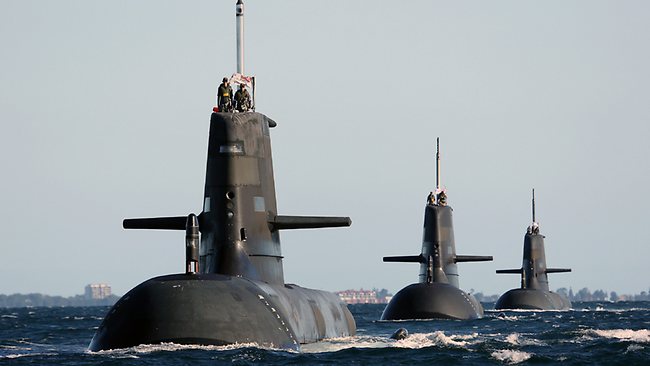
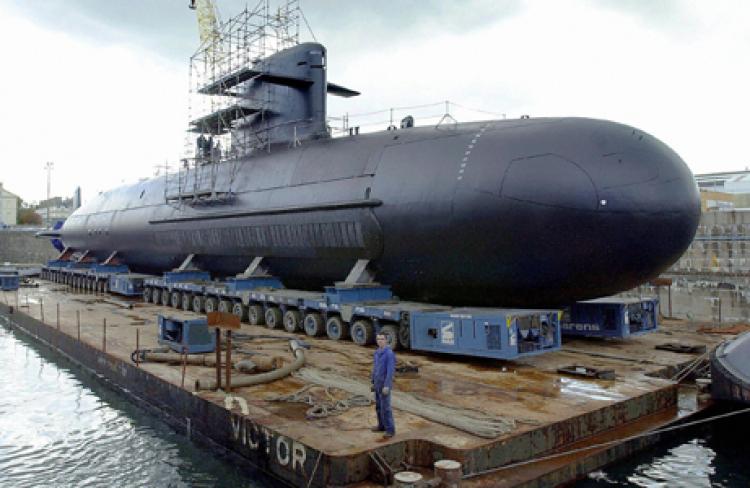
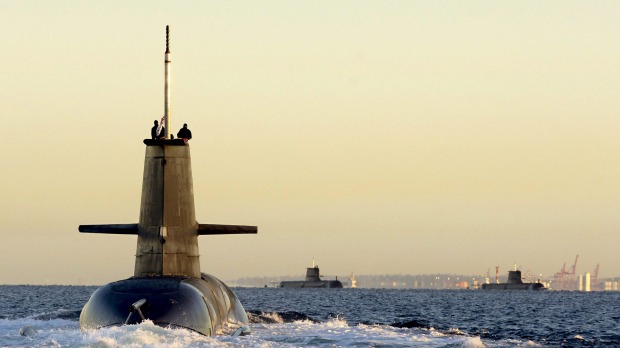
 Collins-class fleet. It based its methodology on that used by the US
Navy to extend its Ohio-class submarines. The project team was
established in response to DMO's conclusion in August 2011 that a
gap between the current and future submarines was inevitable unless
something was done. But when the project group forwarded its final
report to then defence minister Stephen Smith, Smith cherry-picked
its findings, releasing only the most optimistic elements in its
conclusions.
Collins-class fleet. It based its methodology on that used by the US
Navy to extend its Ohio-class submarines. The project team was
established in response to DMO's conclusion in August 2011 that a
gap between the current and future submarines was inevitable unless
something was done. But when the project group forwarded its final
report to then defence minister Stephen Smith, Smith cherry-picked
its findings, releasing only the most optimistic elements in its
conclusions.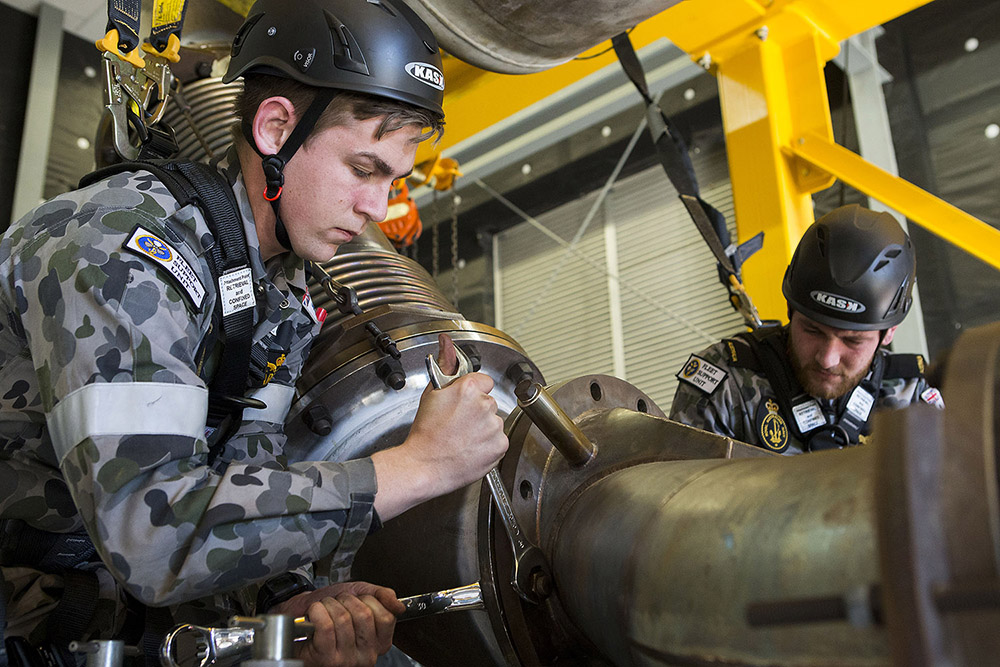 classification, found the Collins-class boats are getting heavier,
noisier and hotter with age. This has forced the navy to compensate
by carrying fewer weapons, and in other ways that make the
submarines less effective.
classification, found the Collins-class boats are getting heavier,
noisier and hotter with age. This has forced the navy to compensate
by carrying fewer weapons, and in other ways that make the
submarines less effective.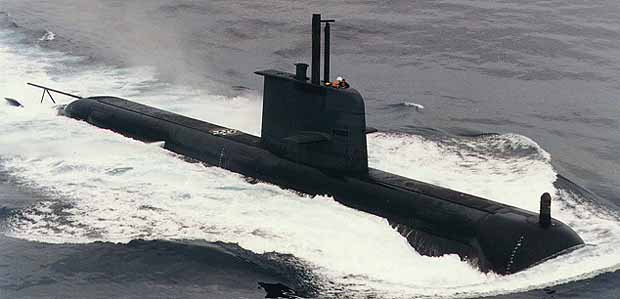
 billions of dollars. Our regrettable experience with the F-111
aircraft illustrates the hazards. Back in the 1990s, extensive
studies were done to explore the feasibility of retaining the F-111
in service until 2020. On the basis of initially favourable
assessments, hundreds of millions of dollars was spent buying
spares, upgrading equipment (and) buying new weapons, yet by around
the middle of the 2000s, after some unfavourable structural testing
results were reported, the plan was abandoned and the F-111 was
retired from service in 2010." For the last decade of its service
life, the F-111 was "effectively useless" as a weapon of war and the
same risks will be inherent in any attempt to extend the life of the
Collins-class fleet.
billions of dollars. Our regrettable experience with the F-111
aircraft illustrates the hazards. Back in the 1990s, extensive
studies were done to explore the feasibility of retaining the F-111
in service until 2020. On the basis of initially favourable
assessments, hundreds of millions of dollars was spent buying
spares, upgrading equipment (and) buying new weapons, yet by around
the middle of the 2000s, after some unfavourable structural testing
results were reported, the plan was abandoned and the F-111 was
retired from service in 2010." For the last decade of its service
life, the F-111 was "effectively useless" as a weapon of war and the
same risks will be inherent in any attempt to extend the life of the
Collins-class fleet.